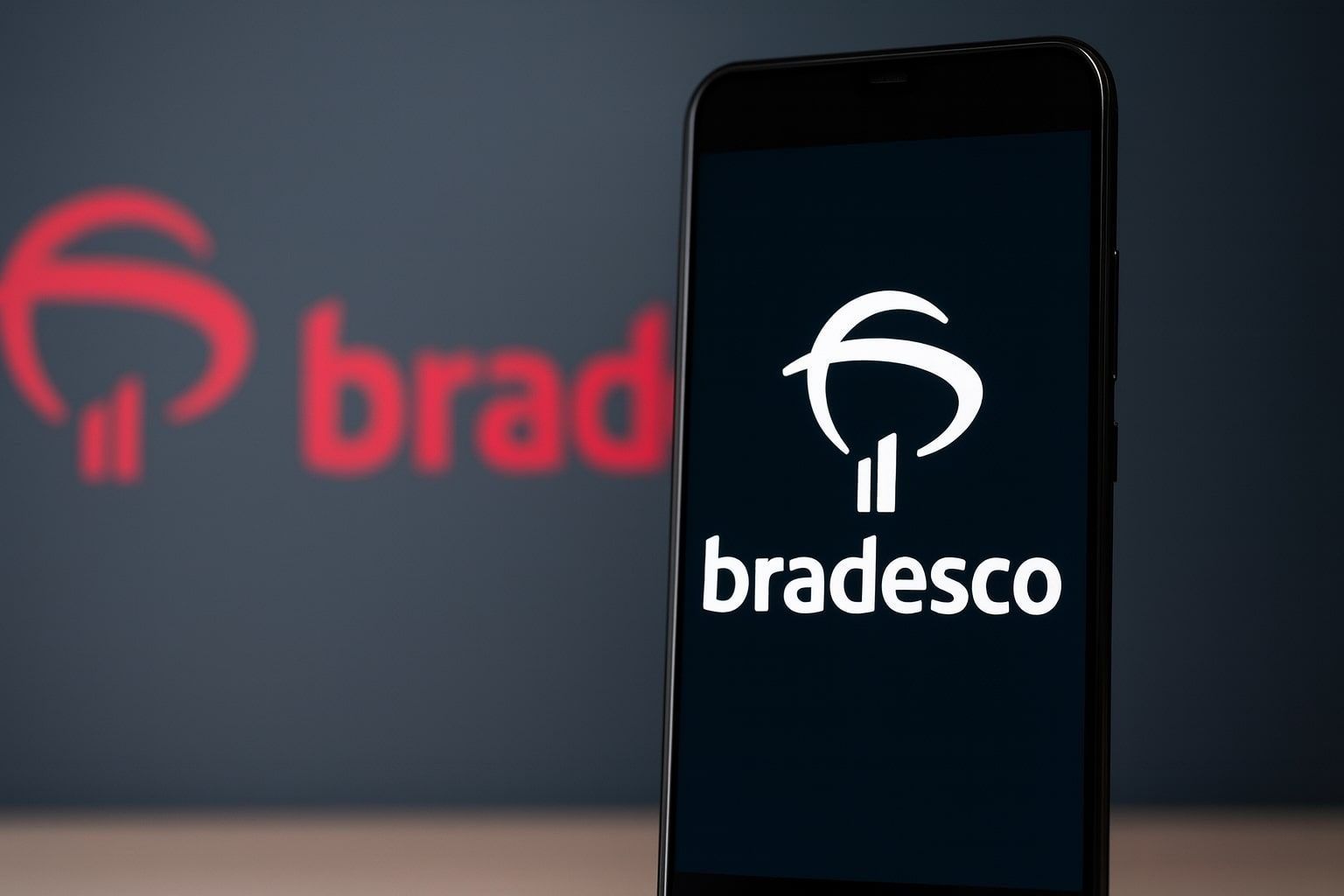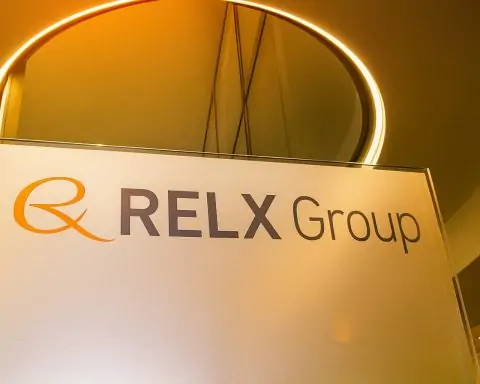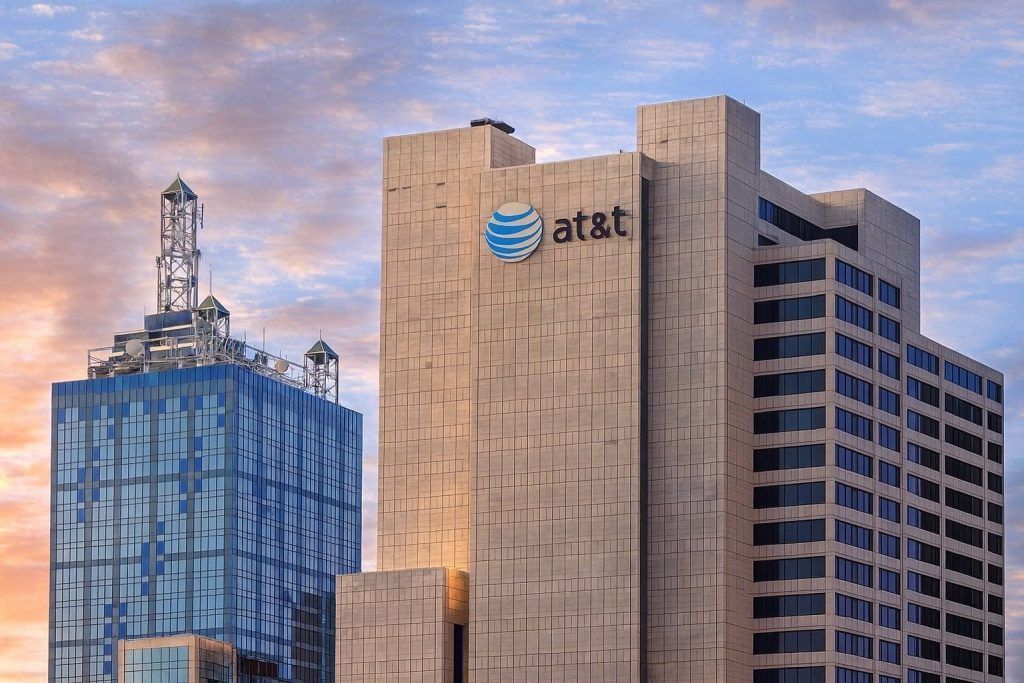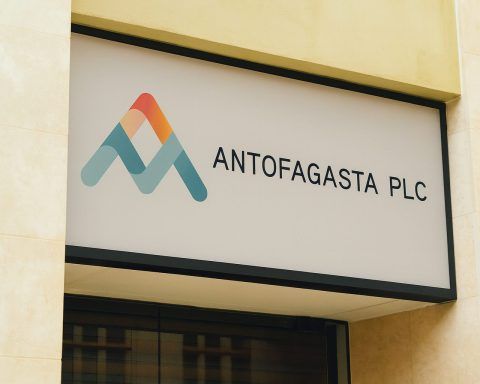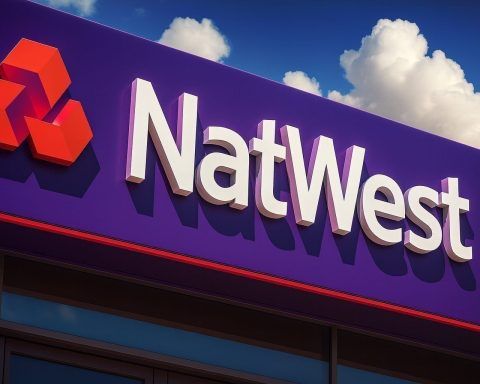Banco Bradesco’s New York–listed ADR (NYSE: BBD) has quietly become one of 2025’s standout emerging‑market bank plays. The Brazilian lender has been riding a robust earnings recovery, a still‑elevated interest‑rate environment at home, and renewed optimism from several research houses.
As of the close on Friday, November 21, 2025, BBD finished at $3.48 per ADR, unchanged on the day on heavy volume of roughly 54.9 million shares. In after‑hours trading, the stock ticked up to about $3.55, a gain of just over 2%. [1]
That price leaves Banco Bradesco’s ADR:
- Almost 90% above its 52‑week low of $1.84
- Still roughly 8% below its 52‑week high of $3.77 [2]
For investors scanning Google News or Discover for ideas in emerging‑market financials, here’s a deep dive into where BBD stock stands today, what drove its turnaround, and the key risks to watch next.
BBD stock price today: where things stand
At Friday’s close, BBD’s snapshot looked like this: [3]
- Last close: $3.48 (Nov 21, 2025, 4:00 p.m. ET)
- After‑hours quote: ~$3.55 (Nov 21, 2025, 7:00 p.m. ET)
- Day range: $3.45 – $3.52
- 52‑week range: $1.84 – $3.77
- Market cap: about $34.1 billion
- Volume (Friday): ~54.9 million shares (well above many global bank ADRs)
- ADR ratio: 1 ADR = 1 common share
On valuation, Banco Bradesco currently trades around: [4]
- 8.5× trailing 12‑month earnings
- 6.6× forward earnings (based on analyst estimates)
- Dividend yield: ~4.8%, on a trailing dividend of about $0.17 per ADR
Those are classic “value bank” multiples, backing a lender that is still in recovery mode but has finally begun to deliver the earnings investors were promised several years ago.
Inside Q3 2025: an earnings recovery gathers momentum
The biggest catalyst behind BBD’s 2025 performance has been its improving fundamentals. Banco Bradesco’s Q3 2025 results, released at the end of October, showed that the turnaround is gaining traction.
According to multiple earnings summaries and management commentary: [5]
- Recurring net income came in around BRL 6.2 billion
- Up ~18.8% year‑on‑year
- Up about 2.3% quarter‑on‑quarter
- Net revenue reached roughly BRL 35 billion, up around 13% year‑on‑year
- Return on average equity (ROAE) improved to about 14.7%, a notable jump vs. a year earlier
- The loan portfolio grew ~9.6% year‑on‑year, with micro and SME lending up about 25%
- Operating expenses remained under control, rising only mid‑single‑digits year‑on‑year
- Management highlighted stable delinquency rates, better credit quality, and progress on a multi‑year transformation plan focused on efficiency and digitalization
Analysts and data services broadly described the quarter as “strong,” with earnings growth driven by: [6]
- Higher net interest income (helped by very high domestic interest rates)
- Solid fee & commission income
- Strong profitability in insurance operations, where Bradesco has a big footprint
In simple terms, Bradesco is finally turning Brazil’s painful high‑rate environment into sustainable earnings growth rather than just surviving it.
A giant in Brazilian banking — and why that matters for BBD
Banco Bradesco is not a niche play. It is one of Brazil’s “big three” private‑sector banks and ranks among the largest banking groups in Brazil and Latin America by assets, with more than 5,000 branches and over 80,000 employees. [7]
For U.S. and global investors, the NYSE‑listed BBD ADR offers:
- Exposure to Brazil’s domestic economy: consumer lending, SME credit, mortgages, cards, and agribusiness
- A sizeable insurance and pension franchise, which has been a key driver of profitability
- A long operating history (founded in 1943) that makes it a core component of Brazilian equity indices
That scale is a double‑edged sword. When Brazil struggles, big banks feel it first. But when the cycle turns in their favor, they can be powerful earnings and dividend machines — and that’s the narrative many BBD bulls are leaning into right now.
The macro backdrop: high rates, cooling inflation
Any view on BBD stock has to start with Brazil’s interest‑rate environment.
The Central Bank of Brazil has kept its benchmark Selic rate at 15% — a near 20‑year high — for the third consecutive meeting, including its decision on November 5, 2025. [8]
At the same time, inflation is finally easing:
- October 2025 consumer prices rose just 0.09% month‑on‑month, down from 0.48% in September
- Annual inflation slowed to 4.68%, below market expectations and drifting closer to the central bank’s 3% target band [9]
The Finance Ministry has trimmed its 2025 GDP growth forecast to 2.2% and cut its inflation projection to 4.6%, acknowledging that high rates are cooling the economy. [10]
Why it matters for BBD stock:
- Positives for banks
- High policy rates support wide net interest margins
- A stronger Brazilian real (helped by high real yields) can reduce FX pressure on dollar‑based ADR investors
- As inflation cools, the risk of even higher rates — which could spark credit stress — diminishes
- Negatives / risks
- A 15% policy rate raises funding costs and can choke off loan demand in sensitive segments
- High borrowing costs can eventually translate into higher defaults, particularly among weaker borrowers
- Growth downshifts make it harder to sustain double‑digit credit expansion across the system
Even with aggressive monetary tightening, credit growth in Brazil has remained surprisingly resilient, thanks in part to higher incomes and the rapid expansion of digital finance. [11] For Bradesco, that mix of high rates and solid credit demand is exactly the environment where its large franchise can shine — if credit quality is kept under control.
What Wall Street and research firms are saying about BBD
Analyst sentiment toward Banco Bradesco has improved substantially throughout 2025, although views are not unanimous.
Consensus view: generally positive, with some caution
According to StockAnalysis’ aggregate data: [12]
- Average rating: “Strong Buy” based on four analyst opinions
- 12‑month price target: about $2.55, which is actually below the current price (listed as ~26% downside from $3.48)
That odd combination — bullish ratings with a below‑market target — usually signals one of two things:
- The price targets are out of date relative to the stock’s rally, or
- Analysts see limited upside from here after a strong year‑to‑date run
Other coverage offers more explicitly bullish takes:
- TipRanks highlights BBD as an “Outperform” in its AI‑driven model, citing strong earnings growth, digital investments, and reasonable valuation. A recent analyst referenced there placed a $3.50 price target on the stock, essentially in line with where it trades today. [13]
- Zacks upgraded Banco Bradesco to a Rank #2 (Buy) in early October, noting that consensus 2025 EPS is around $0.42, implying more than 27% year‑over‑year earnings growth. [14]
At the same time, not everyone is pounding the table:
- Earlier in 2025, Itaú BBA downgraded BBD from Outperform to Market Perform, pointing to challenges even amid strong top‑line growth. [15]
The message for investors: BBD is no longer the deeply distressed bank it was a few years ago, but it is also not a risk‑free compounder.
Dividend profile: income plus turnaround story
Dividends are a key part of the BBD investment thesis.
Based on current data, Banco Bradesco’s ADR: [16]
- Paid around $0.17 per ADR in dividends over the last 12 months
- Offers a trailing yield close to 4.8% at recent prices
- Had an ex‑dividend date on November 5, 2025, meaning recent buyers might be positioning for future payouts rather than the most recent one
Zacks expects earnings to grow meaningfully in 2025, which, if achieved, could underpin steady or rising dividends over time. But as with most Brazilian banks, payouts can be variable and influenced by capital needs, regulatory guidance, and currency swings.
Key risks BBD investors should watch
Even after a strong year, BBD is not a “set‑and‑forget” stock. Here are the main risk factors that investors should keep in mind:
1. Credit quality and SME exposure
Bradesco has leaned into individual and SME lending, segments that are growing faster than the corporate book and delivering attractive yields. In Q3 2025, the SME/micro segment grew about 25% year‑on‑year, materially outpacing the total loan book. [17]
While that supports earnings, it also adds risk:
- SMEs are more vulnerable to high interest rates and economic slowdowns
- Sector peers have already reported stress in specific niches — for example, state‑run Banco do Brasil recently cut its 2025 net‑income outlook due to a sharp rise in agribusiness defaults. [18]
Bradesco’s management notes that overall delinquency trends are stable and that portfolio quality is improving, but the bank still has higher non‑performing loan levels in individuals than some peers, suggesting there is more work to do. [19]
2. Interest‑rate and policy risk
Brazil’s Selic rate has been parked at 15% since mid‑2025. Policymakers have signaled a “very prolonged” pause, even as inflation cools. [20]
- A further delay in rate cuts could pinch borrowers and keep credit costs elevated
- On the flip side, sharp rate cuts in 2026 or beyond could compress net interest margins, even if they support loan growth
Markets are starting to price in the possibility of cuts in early 2026, but the timing remains data‑dependent and subject to political pressure. [21]
3. Currency risk for ADR holders
BBD trades in U.S. dollars, but all of its core business is in Brazilian reais. That means:
- Weakness in the BRL vs. USD can erode ADR returns, even if the local share price rises
- Dividend amounts translated into dollars will fluctuate with exchange rates
4. Competition and structural change
Brazil’s banking landscape is changing rapidly:
- Digital banks and fintechs are winning market share, especially among younger customers and small businesses
- Large incumbents like Bradesco must keep investing heavily in tech, digital channels, and cost efficiency just to defend their position
Analysts following the name have repeatedly emphasized that Bradesco’s turnaround is as much about modernizing operations and culture as it is about classic interest‑rate tailwinds. [22]
Near‑term outlook: what to watch next for BBD stock
Heading into the final weeks of 2025 and early 2026, several catalysts could move BBD:
- Brazil’s next interest‑rate decision – December 10, 2025
- The central bank is widely expected to hold Selic at 15% again. Any surprise hint about the start date or pace of cuts in 2026 could ripple across bank stocks. [23]
- Further evidence on inflation and growth
- Continued disinflation with only modest growth slowdown would be the “sweet spot” for banks: strong real yields, improving real incomes, and manageable credit risk. [24]
- Updates on Bradesco’s transformation plan
- Investors will be looking for:
- More progress on digital adoption and cost efficiency
- Sustained ROE above mid‑teens
- Gradual convergence of Bradesco’s asset quality metrics toward best‑in‑class peers
- Investors will be looking for:
- Dividend announcements and capital management
- Any indication of a higher payout or special distributions could make BBD more attractive to income‑focused investors, but regulators and management may prioritize capital buffers in a high‑rate environment.
Is BBD stock a buy today?
Whether BBD stock is a buy on November 22, 2025 depends on your risk profile and your conviction about Brazil’s macro story.
Reasons investors are bullish:
- Q3 2025 showed strong and improving earnings, with nearly 19% year‑on‑year recurring net income growth and rising ROE. [25]
- Valuation remains undemanding, with single‑digit P/E and a near‑5% dividend yield. [26]
- Several research firms and rating services classify the stock as Buy/Strong Buy or Outperform, citing the turnaround in profitability and ongoing efficiency efforts. [27]
Reasons to stay cautious:
- Brazil still has one of the highest policy rates in the world, and the economy is slowing. A misstep in policy or a sharper downturn could hit banks’ credit costs. [28]
- The loan book is leaning into SMEs and individuals, segments that historically suffer most in a downturn. [29]
- Currency and political risk remain permanent features of Brazilian investing.
For long‑term investors comfortable with emerging‑market volatility and bank cyclicality, BBD today looks like a classic value‑plus‑turnaround story: a systemically important bank that has survived a brutal credit cycle and is now rebuilding profitability under a high‑rate regime.
For more conservative investors, or those heavily exposed to financials already, it may make sense to treat BBD as a small satellite position — if at all — rather than a core holding.
Important: This article is for information and news purposes only and does not constitute financial advice, investment recommendation, or an offer to buy or sell any security. Always do your own research or consult a licensed financial professional before making investment decisions.
Quick FAQs about BBD stock today
What is BBD’s stock price today?
As of the close on November 21, 2025, Banco Bradesco’s ADR (BBD) closed at $3.48, with after‑hours trading lifting it to about $3.55. [30]
Is BBD a good dividend stock?
BBD currently offers a trailing dividend yield of roughly 4.8%, based on about $0.17 per ADR in dividends over the past 12 months. Future payouts will depend on earnings, capital needs, and management decisions, and they can fluctuate over time. [31]
What is the 12‑month price target for BBD?
Price‑target estimates vary. One recent analyst target highlighted by TipRanks is around $3.50, close to the stock’s current level, while a broader aggregation at StockAnalysis lists an average target of $2.55, reflecting either conservative assumptions or outdated pre‑rally estimates. [32]
Is now a good time to buy BBD stock?
That depends on your risk tolerance, time horizon, and view on Brazil’s economy and interest‑rate path. BBD combines attractive valuation and improving fundamentals with meaningful macro, credit, and currency risks. Consider how those factors fit within your overall portfolio and diversification strategy.
References
1. stockanalysis.com, 2. stockanalysis.com, 3. stockanalysis.com, 4. stockanalysis.com, 5. www.tipranks.com, 6. www.tipranks.com, 7. en.wikipedia.org, 8. www.reuters.com, 9. www.reuters.com, 10. www.reuters.com, 11. www.imf.org, 12. stockanalysis.com, 13. www.tipranks.com, 14. www.nasdaq.com, 15. www.insidermonkey.com, 16. stockanalysis.com, 17. www.investing.com, 18. www.reuters.com, 19. www.gurufocus.com, 20. www.reuters.com, 21. www.reuters.com, 22. stockanalysis.com, 23. www.investing.com, 24. www.reuters.com, 25. www.tipranks.com, 26. stockanalysis.com, 27. stockanalysis.com, 28. www.imf.org, 29. www.investing.com, 30. stockanalysis.com, 31. stockanalysis.com, 32. stockanalysis.com
